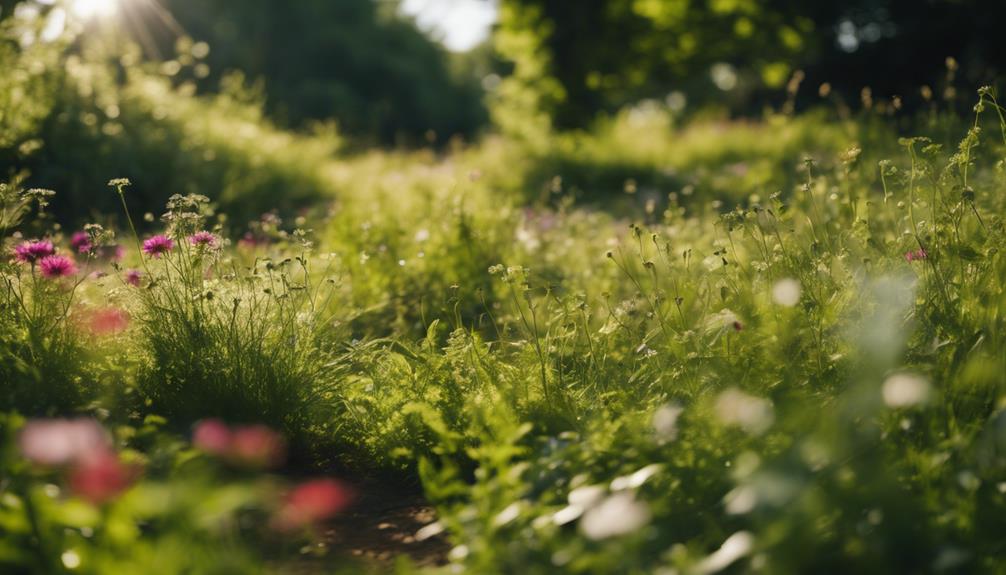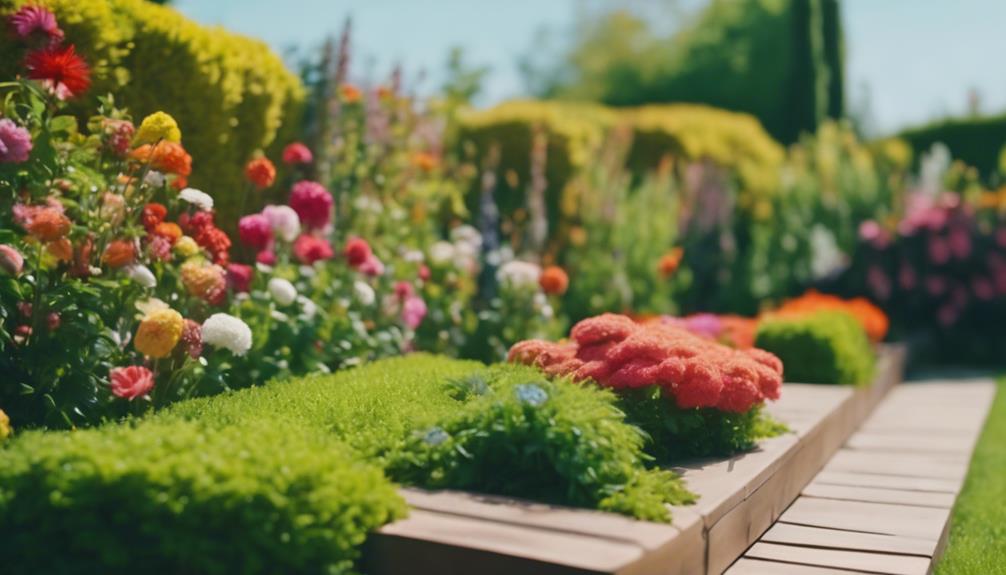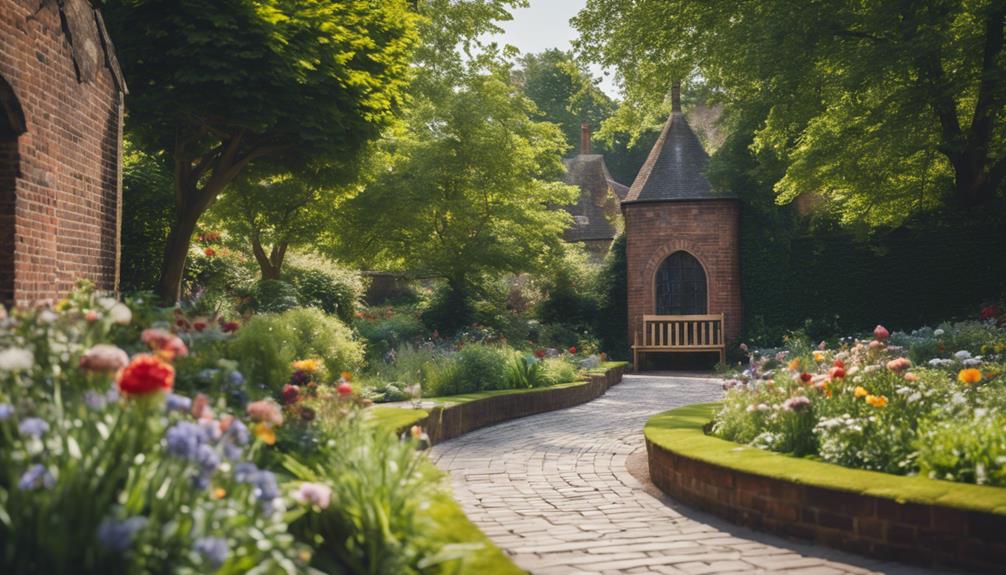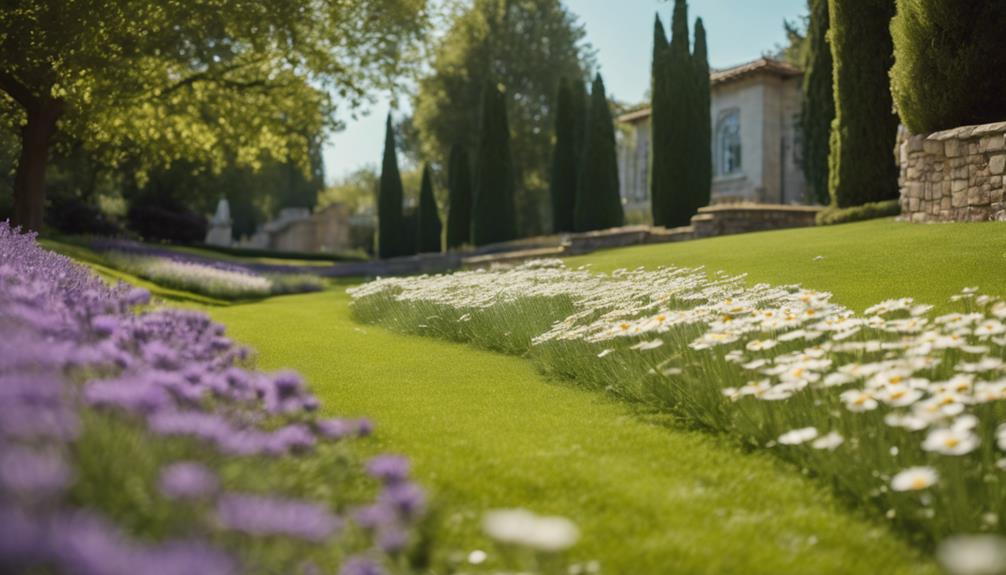
What Are the Best Hardscaping Services for Pets?
17 January 2025What Are Seasonal Hedge Trimming Techniques?
18 January 2025Essential Weed Control in Selly Oak
Maintaining a healthy garden in Selly Oak is not just about choosing the right plants; it's also about keeping pesky weeds at bay. Weeds such as Japanese knotweed and giant hogweed can take over your garden faster than you can say “green thumb”, often outcompeting our beloved native species. This competition can harm local biodiversity, making effective weed control a top priority.
Eco-Friendly Methods
So, how do we tackle these green invaders? Thankfully, there are several eco-friendly methods to consider. Using targeted herbicides can be effective, but why not explore some organic solutions too? Options like vinegar-based sprays or even a good old-fashioned boiling water can work wonders on those stubborn weeds. Additionally, physical removal—whether that's pulling them out by hand or using a hoe—can be satisfying and effective.
And let's not forget the importance of regular maintenance. A little effort goes a long way. Applying mulch around your plants can not only suppress weeds but also enrich the soil. Think of mulch as a protective blanket for your garden, keeping the weeds chilly and your plants comfy!
Professional Help
If the thought of tackling weeds feels overwhelming, don't fret—professional services are just a call away! These experts can provide tailored strategies to rejuvenate your garden while ensuring sustainable practices. Imagine transforming your outdoor space into a lush, weed-free oasis without lifting a finger!
Take Action Today
Being proactive today can lead to a thriving garden tomorrow. Whether you're a seasoned gardener or just starting out, understanding the importance of weed control is essential. Why let weeds steal the spotlight when your beautiful plants deserve it?
For more tips and personalised advice on keeping your garden in tip-top shape, don't hesitate to reach out to local gardening services. Together, we can cultivate a space that's not only aesthetically pleasing but also environmentally friendly.
Let's Get Started!
If you're ready to reclaim your garden from the clutches of weeds, contact us today! We're here to help you every step of the way. After all, a weed-free garden is just a few simple steps away!
Importance of Weed Control
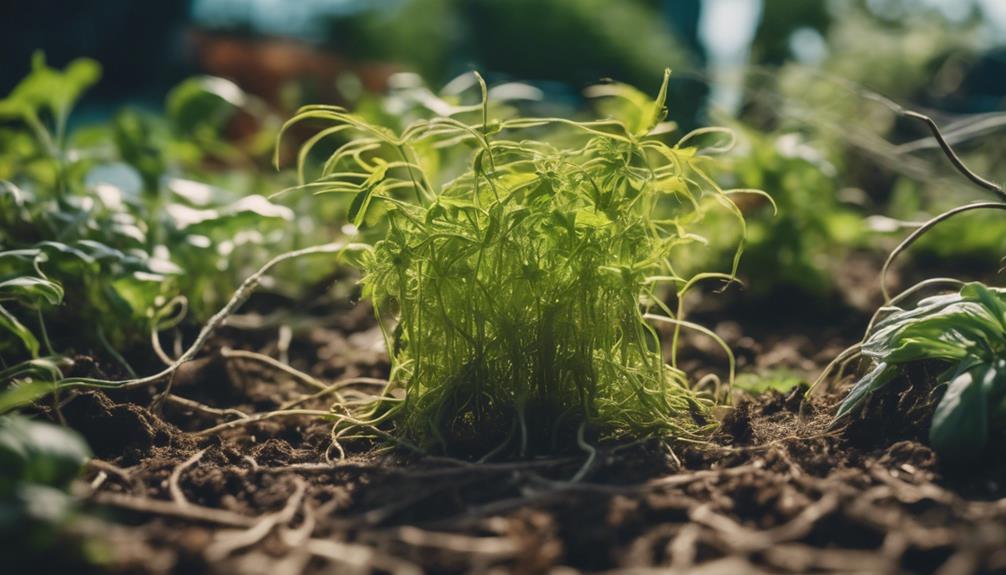
The Crucial Role of Weed Control in Your Garden
Weed control is not just a chore; it's the backbone of a thriving garden. Picture this: your beloved plants vying for nutrients, water, and sunlight, only to be overshadowed by pesky weeds. These unwelcome guests not only spoil the view but also create ecological chaos. They can attract pests and diseases that pose a real threat to your cultivated treasures. So, what's the solution?
Why Weeds Matter
Weeds are more than just a nuisance; they're formidable competitors. Just like that one friend who always steals the spotlight, they compete for resources that your cherished plants desperately need. Without proper management, these invasive species can quickly take over, leading to a decline in plant health and aesthetics. It's a bit like hosting a party where the uninvited guests hog all the snacks—frustrating, isn't it?
Proactive Weed Management Strategies
To keep your garden flourishing, a proactive approach to weed management is essential. Think of it as giving your plants the best fighting chance. Here are some effective strategies:
- Mulching: This is like a warm blanket for your garden beds. A good layer of organic mulch not only suppresses weed growth but also helps retain moisture and enriches the soil as it breaks down. Aim for a thickness of about 7 to 10 centimetres to really keep those weeds at bay.
- Manual Removal: Sometimes, the old-fashioned way is the best way. Regularly getting your hands dirty to pull out weeds can be surprisingly therapeutic. Plus, you'll get to know your garden intimately—every nook and cranny, every stubborn root.
- Eco-Friendly Herbicides: If you're in a bind, consider using eco-friendly herbicides. Look for products that are safe for your plants and the environment. Brands like EcoSMART or Weedol offer effective options that can help regain control without causing harm.
Cultivating Biodiversity and Soil Health
By prioritising weed control, you're not just safeguarding your plants; you're also promoting biodiversity and enhancing soil health. A garden that's free from weeds is a haven for beneficial insects and pollinators, which in turn supports a more balanced ecosystem. Think of it as creating a community where everyone thrives together—your plants, the pollinators, and even you!
The Takeaway
In conclusion, effective weed management is key to fostering a garden where your desired flora can flourish. A bit of effort now will pay off tenfold in the long run, leading to a more productive and visually pleasing outdoor space. So, roll up your sleeves, grab your gardening gloves, and take charge of your garden today!
For more tips or to share your gardening woes, feel free to reach out at [your contact information]. Let's cultivate a greener world together, one weed at a time!
Types of Weeds in Selly Oak
Understanding Invasive Weeds in Selly Oak
Selly Oak is currently grappling with a trio of troublesome invasive weeds: Japanese knotweed, giant hogweed, and Himalayan balsam. Each of these weeds brings its own set of challenges to both our local ecosystems and our beloved gardens, making it essential for residents to be on their toes.
The Tenacity of Japanese Knotweed
Japanese knotweed has earned a rather infamous reputation. This pesky plant is notorious for its remarkable ability to regrow from the tiniest root fragments—think of it as the weed that simply won't take ‘no' for an answer. One moment you've removed it, and the next, it's back, as if it never left! Exterminating this invasive species is no walk in the park, which is why understanding its growth patterns is crucial. If you spot a patch in your garden, it's best to act swiftly. Professional treatments are often the most effective way to tackle this resilient foe.
The Perils of Giant Hogweed
Now let's chat about giant hogweed. This towering plant can reach heights of up to five metres—imagine a small tree sprouting where you'd prefer your tulips! But it's not just its size that's alarming; giant hogweed can cause skin irritation upon contact, leading to painful rashes. If you find yourself brushing against it while tending to your garden, you might be in for a nasty surprise. As with knotweed, early intervention is key. Engaging a professional service to safely remove this plant is often the best course of action.
The Rapid Spread of Himalayan Balsam
Last but not least, we have Himalayan balsam. This vigorous plant has a knack for outcompeting our cherished native flora, especially in areas near water, like riverbanks. Picture it as the overzealous party guest who hogs all the snacks and leaves little for anyone else! Its rapid growth can significantly disrupt the local ecosystem, leading to a decline in biodiversity. If you happen to encounter this invasive species, don't hesitate to pull it up—just be sure to dispose of it properly to prevent it from sprouting again.
Why It Matters
The unchecked growth of these invasive weeds can cause serious ecological upheaval and environmental degradation in Selly Oak. By understanding these species and their behaviours, we can take proactive steps to manage them effectively. Remember, every little action counts towards restoring the natural habitats we cherish.
Call to Action
If you're concerned about these invasive weeds in your garden or local area, don't wait for them to take over! Reach out to local gardening experts or environmental groups who can provide guidance and support. Together, we can help preserve the beauty and health of Selly Oak's natural spaces.
For further assistance or to learn more about effective weed management strategies, feel free to contact us at [insert contact information]. Let's work together to keep Selly Oak green and thriving!
Eco-Friendly Weed Control Methods
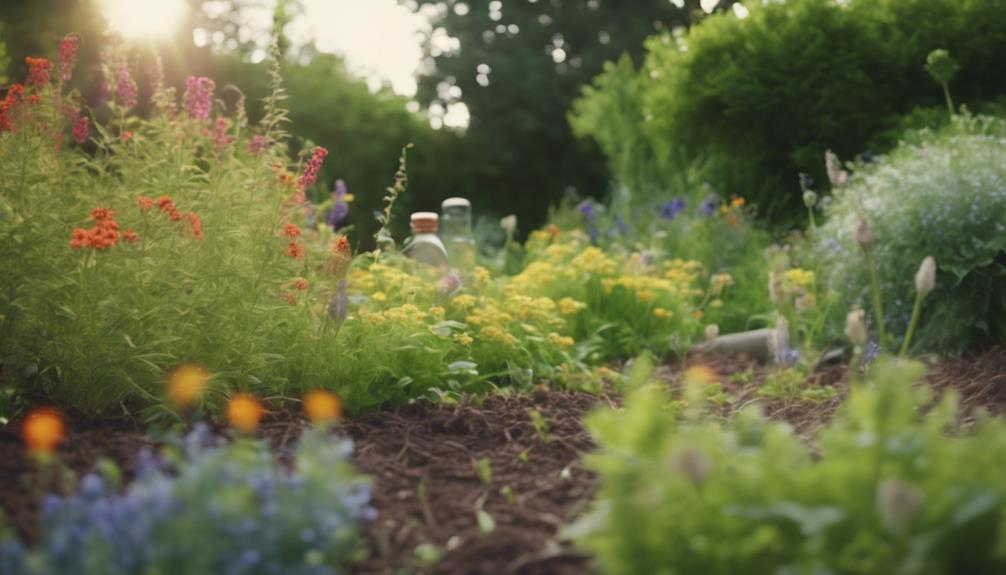
Eco-Friendly Weed Control: A Gentle Approach to Garden Care
When it comes to keeping our gardens looking splendid, the battle against pesky weeds can feel like an uphill struggle. However, there's a silver lining! Numerous eco-friendly weed control methods are available that prioritise environmental safety while effectively managing those invasive species that dare to invade our cherished green spaces.
Targeted Herbicide Treatments: A Thoughtful Choice
Let's talk about targeted herbicide treatments. These methods use environmentally safe chemicals that are specifically designed to take out weeds without wreaking havoc on the surrounding ecosystem. Imagine a sniper versus a shotgun approach – the former is precise and effective, ensuring that only the culprits are dealt with, leaving your beloved plants unscathed.
But remember, not all herbicides are created equal! Look for products that boast organic certifications and are free from harmful chemicals. Brands like EcoSMART or Weed Slayer could be your allies in this weed-fighting journey. A little research goes a long way in finding the right solution that aligns with your eco-conscious values.
Physical Removal: Getting Hands-On
Now, let's roll up our sleeves and get physical! For aggressive invaders like Japanese knotweed and giant hogweed, physical removal is vital. These species have a knack for outcompeting our native flora, so we must keep them in check. By manually pulling them out or using tools like a hoe or trowel, you can make a significant impact. Just be sure to wear gloves – some weeds can be quite prickly about unwanted attention!
Tailored Approaches: One Size Doesn't Fit All
Every garden is different, and so are the weeds that invade them. By adopting a tailored approach based on specific weed types and sizes, you can create a flourishing landscape that supports biodiversity. For instance, if you're dealing with dandelions, a simple vinegar solution can work wonders. Mix one part vinegar with one part water, and voilà! You have a natural weed killer that's both effective and easy to concoct.
The Bigger Picture: Supporting Biodiversity
Embracing these sustainable practices goes beyond just beautifying outdoor spaces; it's about supporting local wildlife and preserving the integrity of native plant communities. Picture this: a garden bustling with butterflies, bees, and birds, all thriving thanks to your eco-friendly efforts. It's a beautiful cycle, isn't it?
Call to Action: Join the Green Movement!
So, what are you waiting for? It's time to take action! Whether you're a seasoned gardener or just starting out, you can make a difference. Start by choosing environmentally safe products, getting hands-on with physical removal, and tailoring your approach to fit your garden's unique needs.
If you have questions or need advice on specific weed issues, don't hesitate to reach out. You can contact local gardening clubs or eco-friendly gardening experts in your area. Together, we can cultivate a greener future – one weed at a time. Happy gardening! ��
Professional Weed Control Services
The Importance of Professional Weed Control Services
When it comes to maintaining the health and beauty of your garden, professional weed control services are like the unsung heroes of horticulture. They employ tailored strategies to effectively manage those pesky invasive plants that can turn your lush paradise into an overgrown jungle. Companies such as Lawnwise, boasting over a decade of experience, utilise top-quality products and state-of-the-art equipment to ensure superior weed removal, adapting their methods to the unique conditions of your lawn.
A Thorough Approach to Weed Management
The approach taken by these professionals is comprehensive. Not only do they apply herbicides, but they also focus on physical removal, prioritising environmentally safe chemicals whenever possible. Think of them as the meticulous gardeners who refuse to let anything less than perfection take root in your green space. Each treatment regimen is customised based on the specific size and species of the weeds, guaranteeing a targeted solution.
Why Choose Lawnwise?
Serving areas like Bournville, Selly Oak, and Kings Norton, these services do more than just enhance the visual appeal of your garden. By tackling weeds effectively, they promote the long-term health of your lawn, nurturing lush, green environments that thrive throughout the year. After all, a well-maintained garden doesn't just look good; it fosters a sense of well-being and joy.
An Investment in Your Garden's Future
Investing in professional weed control is akin to putting your garden on a health regime. Just as you might treat yourself to a spa day, your garden deserves a little TLC too. With the right care, it will flourish, becoming a delightful retreat for you and your family. Imagine sipping your morning tea while basking in the beauty of a weed-free garden—sounds lovely, doesn't it?
If you're tired of battling those relentless weeds on your own, why not give Lawnwise a call? Their expertise could be the key to unlocking your garden's true potential. Don't wait until the weeds have taken over; take action today for a healthier, happier garden!
For more information or to schedule a consultation, reach out to Lawnwise at [insert contact information]. Your garden will thank you!
Tips for Maintaining a Weed-Free Garden
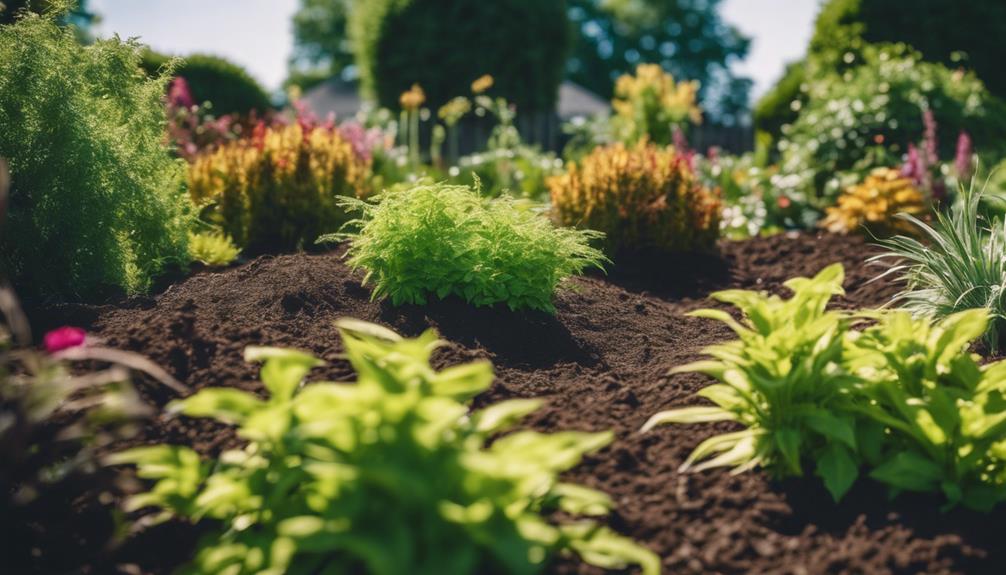
Tips for Keeping Your Garden Weed-Free
Maintaining a weed-free garden can feel like a never-ending battle, but with a sprinkle of strategy and a dash of consistent care, you can create a thriving oasis for your beloved plants. Let's dig into some tried-and-true methods that will help you keep those pesky invaders at bay.
Get Hands-On with Weeding
First things first: roll up your sleeves and get ready to tackle those weeds! Regularly removing them by hand is one of the best ways to maintain control. It's a bit like pulling out a stubborn weed in your life—once it's gone, you can breathe easier! For those larger infestations, don't hesitate to reach for herbicides. Just make sure to choose a product that's effective yet safe for your garden's delicate ecosystem.
The Power of Mulch
Ah, mulch—your garden's best friend! A generous layer of wood chips or bark not only suppresses weed growth but also bolsters soil health. Think of it as a warm blanket for your plants, retaining moisture and improving soil structure. Plus, it looks rather lovely, doesn't it?
Pre-Emergent Herbicides: Your Early Bird Strategy
In early spring, consider using pre-emergent herbicides. These clever products prevent the germination of common weeds such as crabgrass and dandelions before they even get a chance to make themselves at home. It's like putting a ‘No Entry' sign before the party starts! Just be sure to read the labels carefully and apply them at the right time for maximum effectiveness.
Enriching Your Soil
Healthy soil is the foundation of a flourishing garden. By enriching your soil with organic matter—think compost or well-rotted manure—you'll create a nutrient-rich environment that allows your desired plants to thrive and outcompete those pesky weeds. It's all about giving your plants the upper hand, so they can flourish in their own right.
Physical Barriers: A Smart Defence
Finally, consider implementing physical barriers like landscape fabric or plastic sheeting. These materials can effectively inhibit weed growth in targeted areas, allowing you to focus your efforts where they're needed most. It's a bit like building a fortress around your prized petunias!
Conclusion: The Weeding Journey
Creating a weed-free paradise takes time and effort, but with these strategies in your gardening toolkit, you'll be well-equipped to keep those intruders at bay. Remember, a little bit of weeding today can save you a lot of heartache tomorrow. So, grab your gardening gloves and get out there—your flourishing garden awaits!
For more tips and expert advice, feel free to reach out. Happy gardening! ��
Frequently Asked Questions
When Should I Put Down My Weed Control?
When Should I Apply My Weed Control?
To achieve the best results in your garden, timing is everything. The prime window for applying weed control treatments typically spans from March to October during the growing season. Think of it as a marathon rather than a sprint; a bit of patience can yield a lush, weed-free oasis.
Early Spring or Late Summer: The Sweet Spots
If you want to nip those pesky weeds in the bud, consider applying treatments in early spring or late summer. These pivotal periods are key for preventing seed production, which means fewer weeds next season. Imagine it like a game of chess; a well-timed move can put you several steps ahead of your weedy opponents.
Keep a Watchful Eye
Regular monitoring is essential. Weeds can be sneaky, popping up when you least expect them. Think of yourself as a vigilant gardener—each time you step into your patch of green, take a moment to scout for any unwelcome guests. The sooner you detect them, the easier they are to manage.
Products to Consider
When it comes to products, there are various options available on the market. Look for selective herbicides that target broadleaf weeds while sparing your cherished lawn grasses. Brands like Roundup or Gallup are often recommended, but always read the label and follow the instructions to ensure safety and effectiveness.
In Conclusion
What Do Councils Use for Weed Killer?
What Do Councils Use for Weed Killer?
When it comes to tackling those pesky weeds that spring up in urban areas, councils have traditionally relied on glyphosate-based herbicides, such as Roundup. These products have gained a reputation for being highly effective at controlling unwanted vegetation, making them a go-to choice for maintaining the aesthetic appeal of parks, pavements, and public spaces.
However, as our understanding of environmental concerns has evolved, many councils are now reconsidering their approach. The potential impact of chemical herbicides on both human health and the natural ecosystem is prompting a shift towards more sustainable practices. For instance, some councils are exploring methods like hot water weeding or flame weeding. These techniques not only provide effective weed control but also minimise the use of chemicals, aligning with a growing trend towards eco-friendly solutions.
Alternative Methods: Hot Water and Flame Weeding
Hot water weeding involves applying boiling water directly onto the weeds, a method that effectively destroys their cellular structure. It's like giving those stubborn plants a sudden, steamy wake-up call! Councils that have adopted this technique often report impressive results, especially in areas with dense weed populations.
On the other hand, flame weeding employs a handheld propane torch to scorch the weeds. Picture a knight battling dragons, but instead of fire-breathing beasts, it's just dandelions and thistles. This method can be particularly effective in gravel paths and driveways, where traditional methods might struggle to penetrate the hard surface.
Why the Shift Matters
So, why should we care about what councils are using for weed control? Well, for starters, it reflects a broader shift in societal values. Many of us are becoming increasingly conscious of our environmental footprint, and the choices made by local councils can either support or undermine these efforts. Plus, with the rise in urban gardening and community green spaces, the implications of herbicide use can directly affect our health and wellbeing.
It's heartening to see councils making strides towards greener practices, but change doesn't happen overnight. If you feel strongly about the methods used in your area, why not reach out to your local council? You can ask questions, voice your opinions, or even suggest alternatives. After all, a little community engagement can go a long way!
In Conclusion
While glyphosate-based herbicides have been the traditional choice for weed control, the tide is turning. The exploration of alternative methods like hot water and flame weeding represents a proactive step towards sustainability. So, the next time you see a council worker battling weeds, you might just appreciate the effort they're putting in to keep our urban spaces beautiful—without compromising the planet.
Got thoughts on this? Fancy a chat about weed control in your neighbourhood? Reach out to your local council and let your voice be heard!
When Should I Spray Weed Killer?
When to Spray Weed Killer: Timing is Everything
Timing is the heartbeat of effective weed control. To truly tackle those pesky intruders in your garden, it's best to spray weed killer during calm, dry conditions. The ideal windows of opportunity are in early spring or late summer when weeds are actively growing. This is critical because a weed's growth phase is when it's most receptive to absorption, ensuring a potent impact on those unwanted invaders.
The Right Conditions Matter
Imagine this: you're armed with your trusty weed killer, but the wind is howling like a banshee. Not only is it uncomfortable, but it can also blow the herbicide onto your prized flowers or vegetables. Calm and dry conditions are paramount. On a still day, the product will stay where it's needed most—on those stubborn weeds.
The Benefits of Timing
Why early spring and late summer? Well, think of it this way. In early spring, those weeds are just waking up from their winter slumber, eager for sunlight and nutrients. Late summer, however, is when they're in full swing, having grown strong and hearty. Targeting these growth phases boosts your chances of success and helps you reclaim your garden space.
Practical Tips for Weed Control
- Preparation is Key: Before spraying, ensure the area is clear of debris and other plants you want to protect. A little prep goes a long way!
- Choose the Right Product: Not all weed killers are created equal. For a more eco-friendly option, consider products like *Glyposate*, which are effective yet kinder to the environment.
- Follow Instructions: Always read the label carefully. Each product has specific guidelines on how to use it effectively and safely.
- Stay Vigilant: After application, keep an eye on your garden. Sometimes, you might need a second round if those pesky weeds are particularly stubborn.
Final Thoughts
Gardeners, take heed! The secret to a beautiful garden lies not just in the plants you choose but in how you manage the weeds that threaten to take over. So, next time you're eyeing those invaders, remember: the right time, conditions, and products can make all the difference in your fight against weeds.
For more gardening tips or to share your own experiences, feel free to reach out! Let's cultivate a conversation about creating that dream garden together. Happy gardening!
Is Vinegar a Good Weed Killer Uk?
Is Vinegar a Good Weed Killer in the UK?
If you're grappling with pesky weeds in your garden, you might be wondering: can vinegar come to the rescue? Well, the answer is a resounding yes! Vinegar serves as an effective, eco-friendly weed killer here in the UK, especially when dealing with those stubborn annual weeds that seem to pop up overnight.
How Does it Work?
The secret weapon in vinegar is its acetic acid content. This compound works by disrupting the cell walls of plants, effectively dehydrating them and causing them to wilt. It's a bit like throwing a bucket of cold water on them, but without the refreshing feeling—just the opposite, in fact!
However, it's worth noting that while vinegar is great for tackling annual weeds, you might need to roll up your sleeves for a bit of extra effort when it comes to perennial weeds. These persistent little blighters often require repeated applications to truly send them packing. Think of it like a game of whack-a-mole—keep at it, and eventually, you'll win!
Application Tips
For optimal results, here's a quick how-to:
- Choose your vinegar: Regular kitchen vinegar typically contains about 5% acetic acid, which works well for light infestations. If you're serious about weed control, look for horticultural vinegar with a higher acetic acid concentration (around 20%). Just handle it with care, as this can be quite potent!
- Pick a sunny day: Weeds are more vulnerable when they're basking in the sunshine. Spraying vinegar on a warm, dry day will enhance its effectiveness.
- Target the right spots: Aim for the foliage of the weeds, avoiding plants you want to keep. A steady hand will help ensure you don't accidentally declare war on your prized petunias!
- Repeat as necessary: For those stubborn perennial weeds, you might find that a weekly application is the ticket to success. Consistency is key!
Is it Safe?
One of the great things about vinegar is that it's non-toxic and safe for the environment, making it a fabulous choice for organic gardening enthusiasts. However, be mindful of where you spray; while it's excellent for weeds, it can harm any plants you don't want to sacrifice.
Final Thoughts
So, if you're looking for a budget-friendly, eco-conscious solution to your weed woes, give vinegar a go! It's straightforward, effective, and, dare I say, a bit of a DIY hero in the garden. Just remember to keep an eye on your garden's plant inhabitants and apply with care. Happy gardening, and may your weeds be few and far between!
If you have any questions or need further tips on using vinegar as a weed killer, feel free to reach out. Your garden will thank you!

